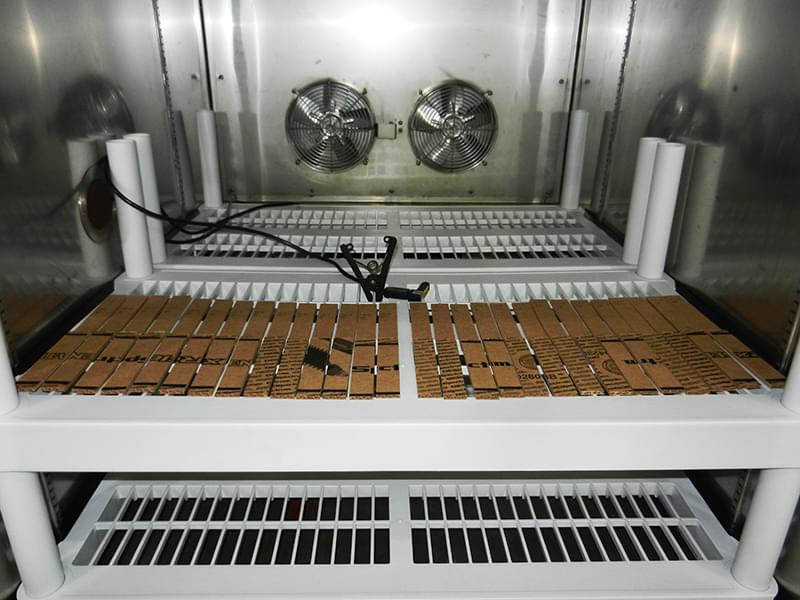Thermoplastic hot melt adhesives are commonly used for corrugated
packaging closures because of their excellent adhesion, quick set, and relatively low cost. They’re ideal for automated, high volume, high speed production lines.
However, with multiple variables to consider and a lack of standardized preparation or testing methods, it can be challenging to choose the right hot melt adhesive for a particular application. When faced with choosing between two options for a corrugated fiberboard box application, a component manufacturer turned to the team at Smithers for help. The client wanted to weigh
cost against performance, not wanting to sacrifice quality and run the risk of performance degradation as a result of making a purely budget-driven decision.
The team at Smithers developed a custom test method based on research, input from the
manufacturer’s logistics and sourcing team, and their years of experience:
- Single lap shear samples were fabricated in the lab utilizing two hot melt adhesive types, Type A and Type B, on a C-flute corrugated substrate.
- The adhesives were processed at two different temperatures before being applied to the cardboard samples.
- The samples were conditioned in a temperature- and humidity-controlled chamber at three different temperatures.
- The samples were subjected to a tensile tester to determine when the adhesive bond would fail.
The testing protocol found that the less expensive hot melt material, Type B, performed better than Type A in every tested condition. Additionally, Type B’s cost was 58 percent lower than Type A.
The entire process, from project initiation to a final report, took less than three weeks, and the savings and knowledge gained from the test results far outweighed the cost of testing.

